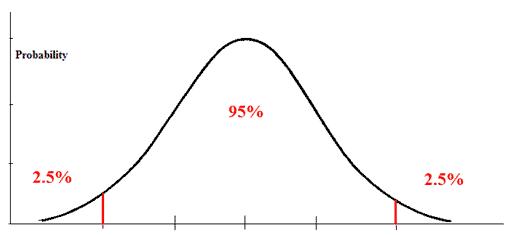
- Home
- Adjusted R-Squared
- Analysis of Variance
- Arithmetic Mean
- Arithmetic Median
- Arithmetic Mode
- Arithmetic Range
- Bar Graph
- Best Point Estimation
- Beta Distribution
- Binomial Distribution
- Black-Scholes model
- Boxplots
- Central limit theorem
- Chebyshev's Theorem
- Chi-squared Distribution
- Chi Squared table
- Circular Permutation
- Cluster sampling
- Cohen's kappa coefficient
- Combination
- Combination with replacement
- Comparing plots
- Continuous Uniform Distribution
- Continuous Series Arithmetic Mean
- Continuous Series Arithmetic Median
- Continuous Series Arithmetic Mode
- Cumulative Frequency
- Co-efficient of Variation
- Correlation Co-efficient
- Cumulative plots
- Cumulative Poisson Distribution
- Data collection
- Data collection - Questionaire Designing
- Data collection - Observation
- Data collection - Case Study Method
- Data Patterns
- Deciles Statistics
- Discrete Series Arithmetic Mean
- Discrete Series Arithmetic Median
- Discrete Series Arithmetic Mode
- Dot Plot
- Exponential distribution
- F distribution
- F Test Table
- Factorial
- Frequency Distribution
- Gamma Distribution
- Geometric Mean
- Geometric Probability Distribution
- Goodness of Fit
- Grand Mean
- Gumbel Distribution
- Harmonic Mean
- Harmonic Number
- Harmonic Resonance Frequency
- Histograms
- Hypergeometric Distribution
- Hypothesis testing
- Individual Series Arithmetic Mean
- Individual Series Arithmetic Median
- Individual Series Arithmetic Mode
- Interval Estimation
- Inverse Gamma Distribution
- Kolmogorov Smirnov Test
- Kurtosis
- Laplace Distribution
- Linear regression
- Log Gamma Distribution
- Logistic Regression
- Mcnemar Test
- Mean Deviation
- Means Difference
- Multinomial Distribution
- Negative Binomial Distribution
- Normal Distribution
- Odd and Even Permutation
- One Proportion Z Test
- Outlier Function
- Permutation
- Permutation with Replacement
- Pie Chart
- Poisson Distribution
- Pooled Variance (r)
- Power Calculator
- Probability
- Probability Additive Theorem
- Probability Multiplecative Theorem
- Probability Bayes Theorem
- Probability Density Function
- Process Capability (Cp) & Process Performance (Pp)
- Process Sigma
- Quadratic Regression Equation
- Qualitative Data Vs Quantitative Data
- Quartile Deviation
- Range Rule of Thumb
- Rayleigh Distribution
- Regression Intercept Confidence Interval
- Relative Standard Deviation
- Reliability Coefficient
- Required Sample Size
- Residual analysis
- Residual sum of squares
- Root Mean Square
- Sample planning
- Sampling methods
- Scatterplots
- Shannon Wiener Diversity Index
- Signal to Noise Ratio
- Simple random sampling
- Skewness
- Standard Deviation
- Standard Error ( SE )
- Standard normal table
- Statistical Significance
- Statistics Formulas
- Statistics Notation
- Stem and Leaf Plot
- Stratified sampling
- Student T Test
- Sum of Square
- T-Distribution Table
- Ti 83 Exponential Regression
- Transformations
- Trimmed Mean
- Type I & II Error
- Variance
- Venn Diagram
- Weak Law of Large Numbers
- Z table
- Statistics Useful Resources
- Statistics - Discussion
Statistics - One Proportion Z Test
The test statistic is a z-score (z) defined by the following equation. ${z = \frac{(p - P)}{\sigma}}$ where P is the hypothesized value of population proportion in the null hypothesis, p is the sample proportion, and ${\sigma}$ is the standard deviation of the sampling distribution.
Test Statistics is defined and given by the following function:
Formula
${ z = \frac {\hat p -p_o}{\sqrt{\frac{p_o(1-p_o)}{n}}} }$
Where −
${z}$ = Test statistics
${n}$ = Sample size
${p_o}$ = Null hypothesized value
${\hat p}$ = Observed proportion
Example
Problem Statement:
A survey claims that 9 out of 10 doctors recommend aspirin for their patients with headaches. To test this claim, a random sample of 100 doctors is obtained. Of these 100 doctors, 82 indicate that they recommend aspirin. Is this claim accurate? Use alpha = 0.05.
Solution:
Define Null and Alternative Hypotheses
${ H_0;p = .90 \\[7pt] H_0;p \ne .90 }$
Here Alpha = 0.05. Using an alpha of 0.05 with a two-tailed test, we would expect our distribution to look something like this:

Here we have 0.025 in each tail. Looking up 1 - 0.025 in our z-table, we find a critical value of 1.96. Thus, our decision rule for this two-tailed test is: If Z is less than -1.96, or greater than 1.96, reject the null hypothesis.Calculate Test Statistic:
${ z = \frac {\hat p -p_o}{\sqrt{\frac{p_o(1-p_o)}{n}}} \\[7pt] \hat p = .82 \\[7pt] p_o = .90 \\[7pt] n = 100 \\[7pt] z_o = \frac {.82 - .90}{\sqrt{\frac{ .90 (1- .90)}{100}}} \\[7pt] \ = \frac{-.08}{0.03} \\[7pt] \ = -2.667 }$
As z = -2.667 Thus as result we should reject the null hypothesis and as conclusion, The claim that 9 out of 10 doctors recommend aspirin for their patients is not accurate, z = -2.667, p < 0.05.